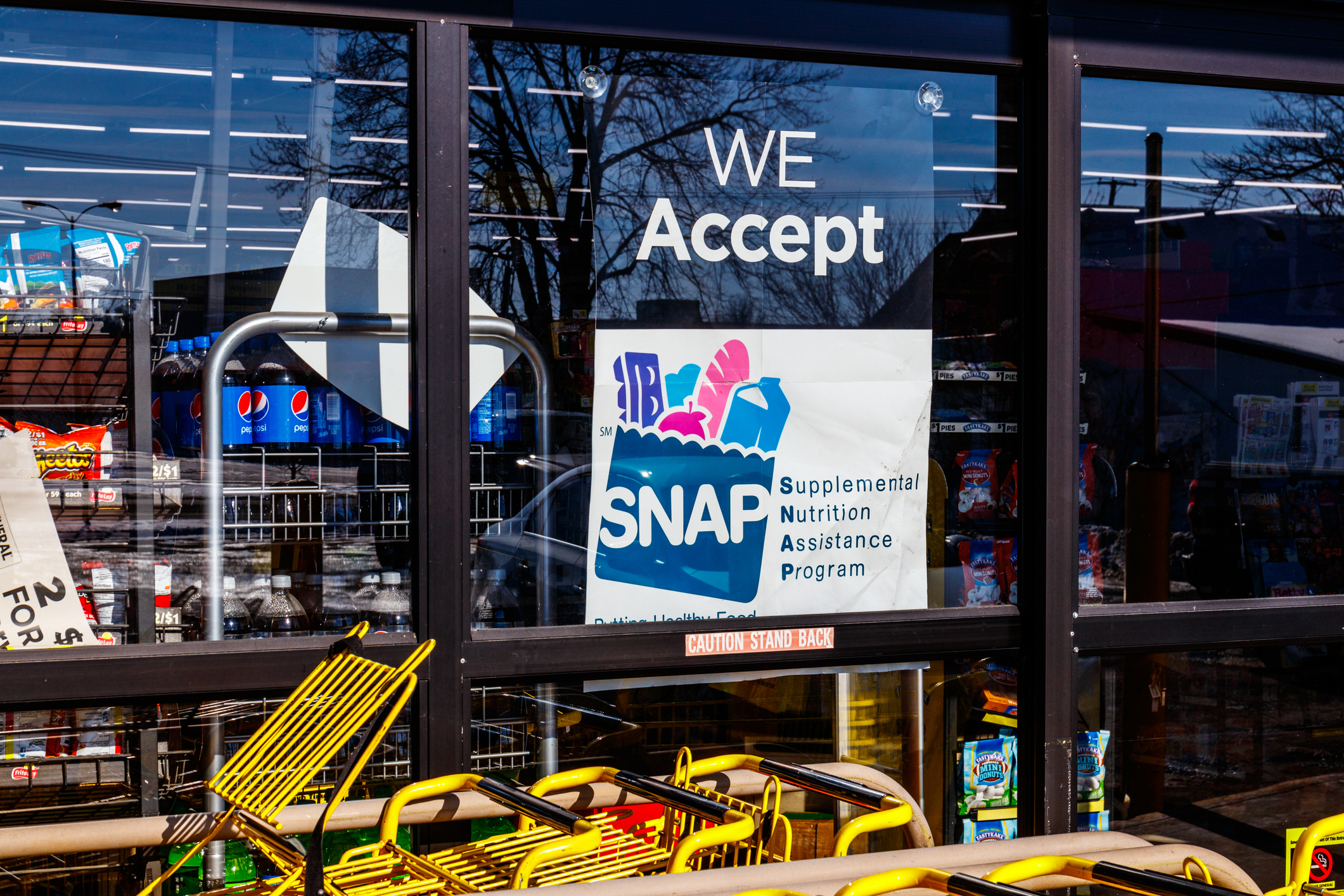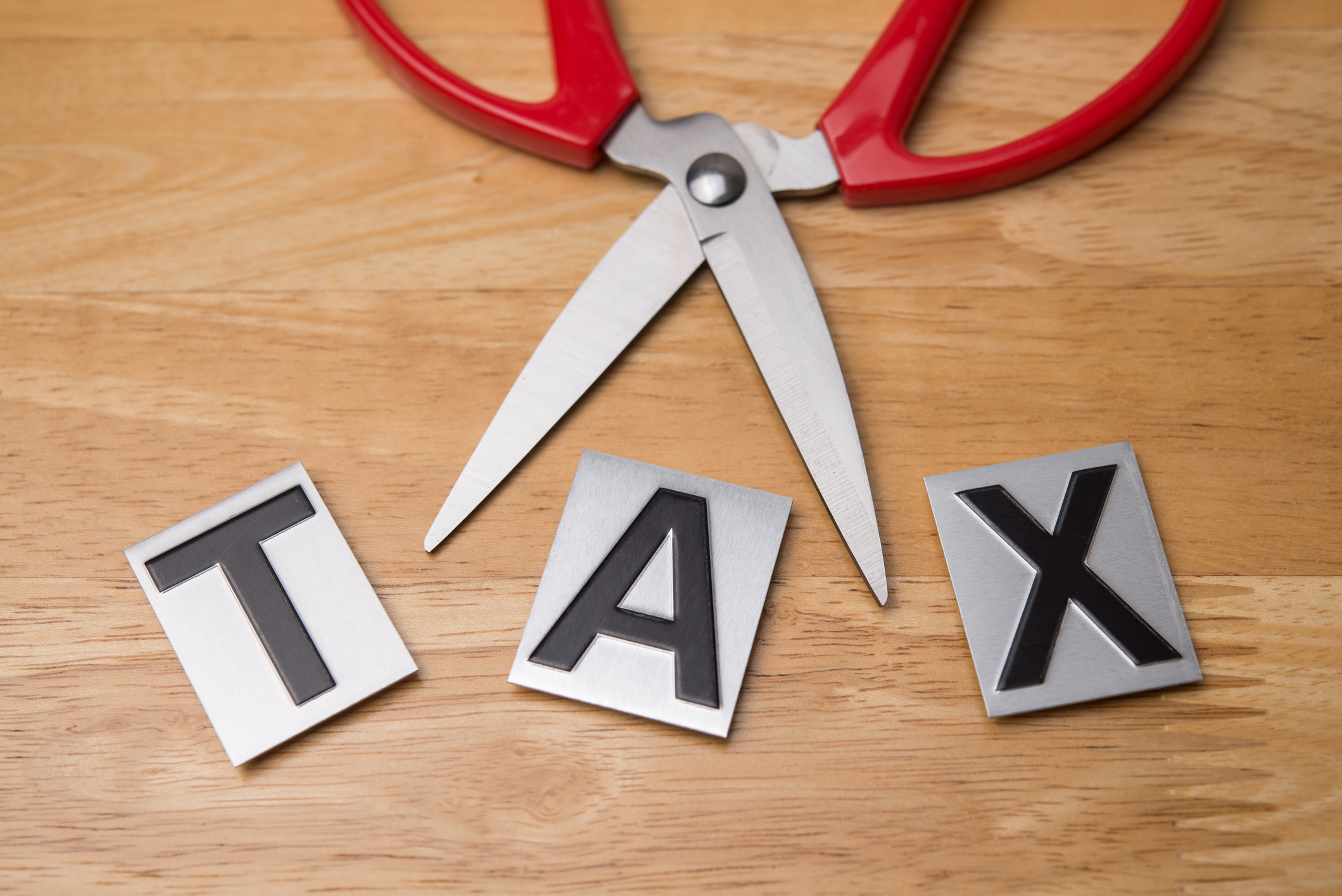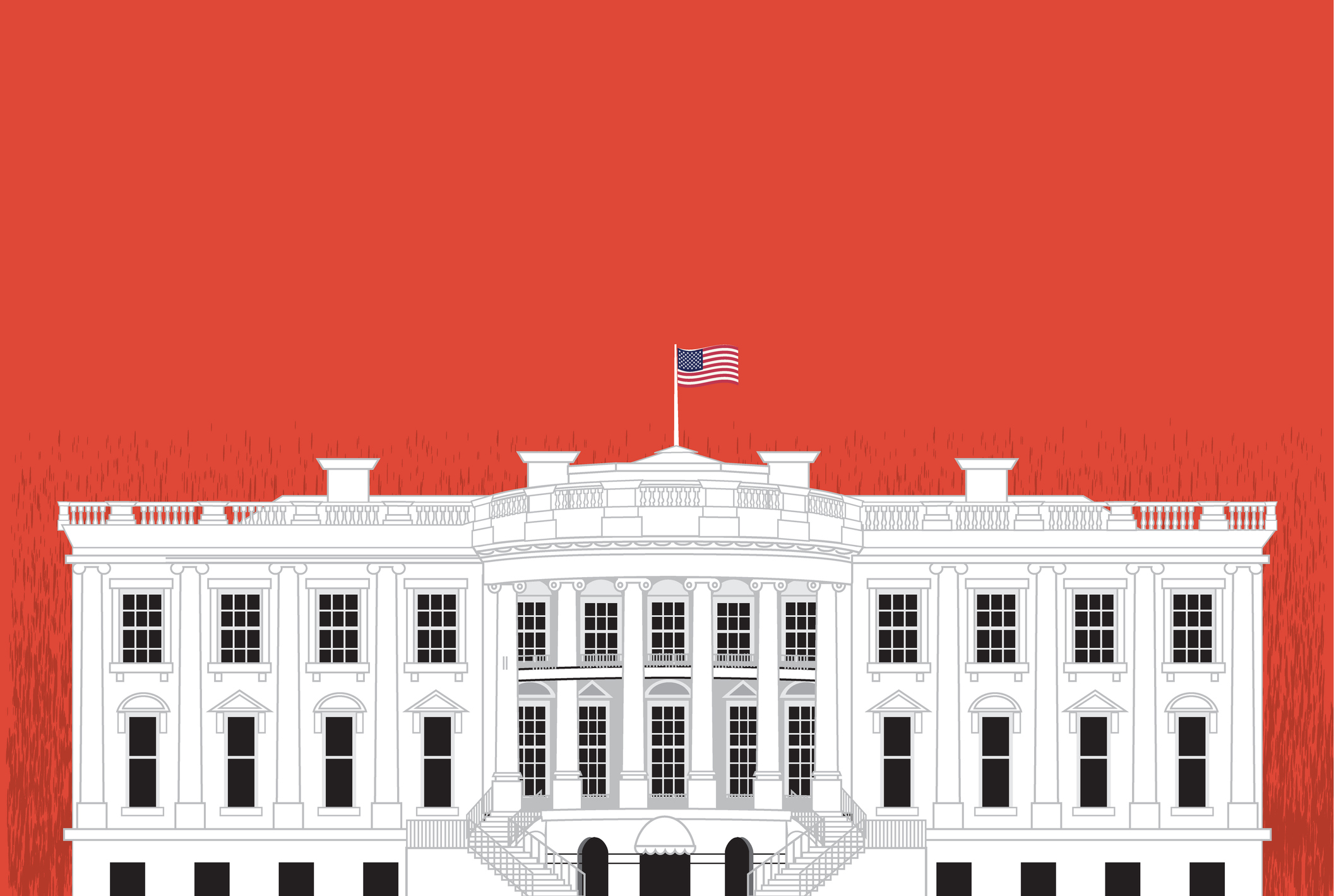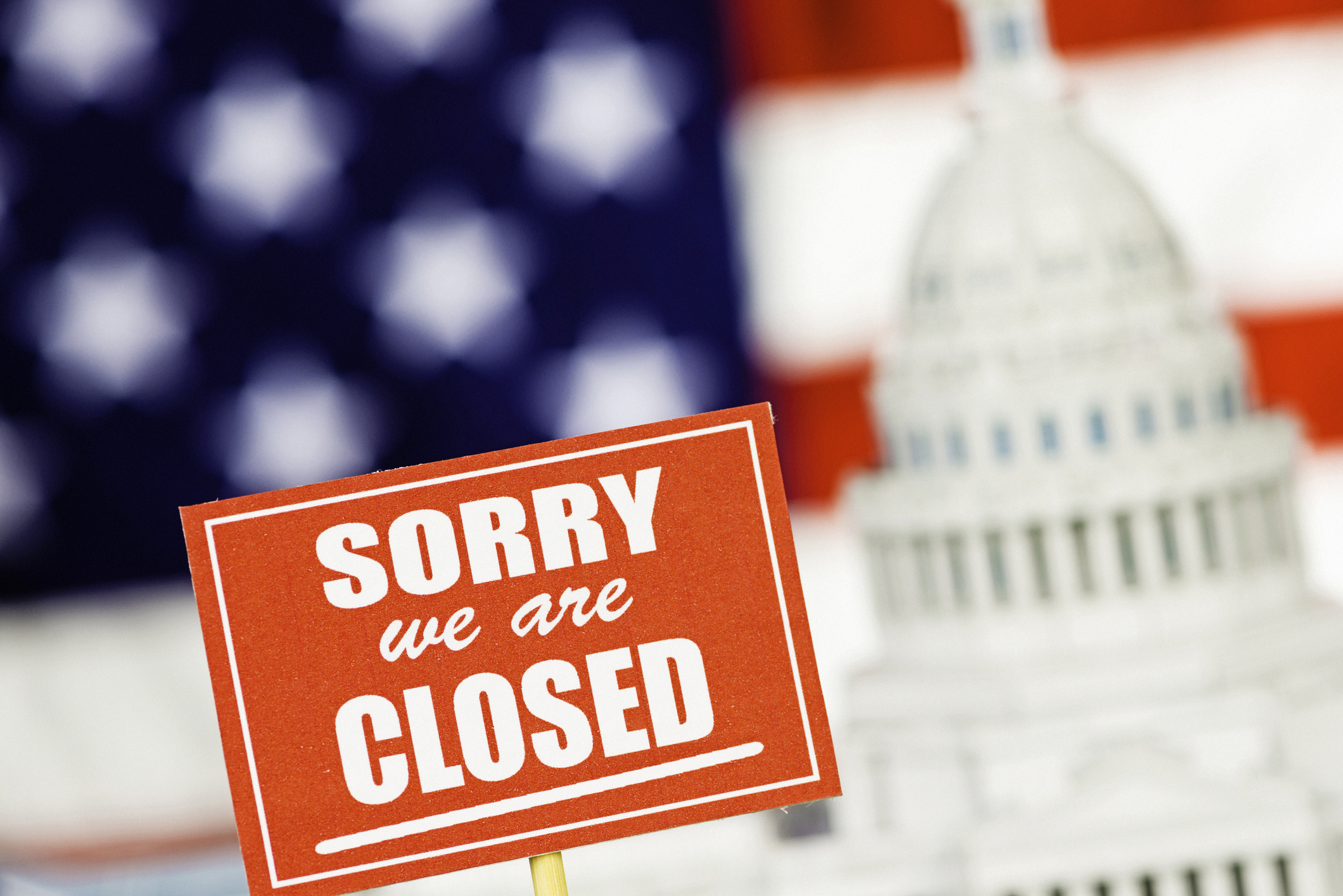How Five States Are Worse Off After Trump’s Cuts to SNAP and Medicaid
Due to Trump's new tax law, some states will experience a greater impact than others.


It’s been less than a month since President Donald Trump signed the so-called ‘One Big Beautiful Bill’ into law, and some states are already bracing for the fallout.
The major tax cuts and spending package is projected to increase the national deficit by $3.4 trillion over the next decade, according to the Congressional Budget Office (CBO). To fund the new tax cuts, the legislation cuts funding for key programs, including Medicaid and the Supplemental Nutrition Assistance Program (SNAP).
Hundreds of rural hospitals that depend on Medicaid are warning of reduced services or potential forced closures.
From just $107.88 $24.99 for Kiplinger Personal Finance
Become a smarter, better informed investor. Subscribe from just $107.88 $24.99, plus get up to 4 Special Issues

Sign up for Kiplinger’s Free Newsletters
Profit and prosper with the best of expert advice on investing, taxes, retirement, personal finance and more - straight to your e-mail.
Profit and prosper with the best of expert advice - straight to your e-mail.
At the same time, millions of people who depend on food stamps to put food on the table are at risk of losing SNAP benefits altogether. At the same time, others are slated to get a smaller amount each month.
Here’s how Trump’s funding cuts to Medicaid and SNAP will impact some states more than others.
1. California
California SNAP benefits lawsuit
More than 3,000 families are projected to lose all of their SNAP benefits in California, according to the Urban Institute, the highest figure in the nation.
New rules for the SNAP, the federally funded and state-administered public food assistance program formerly known as food stamps, require beneficiaries to have a Social Security Number (SSN) to receive food stamps.
The Trump administration is demanding that states hand over personal and sensitive information for millions of SNAP recipients, including their home addresses and SSNs dating back five years.
California Attorney General Rob Bonta and 20 attorneys general announced on July 28 that they are suing the U.S. Department of Agriculture (USDA) over this demand. They say it violates state and federal privacy laws and that it’s part of the Trump administration’s latest attempt to “collect unrelated, protected data to fuel mass deportation.”
“We will not comply with this illegal demand. We’ll see the President in court,” AG Bonta said in a joint statement.
Individuals who lack an SSN won’t be the only ones impacted by the new SNAP funding cut and rule changes.
- A little over 900 households could see an average monthly benefit reduction of $190, while just under 400 families would see their benefits reduced by $88 a month.
- As many as 516 working households would see a monthly reduction in food stamp benefits of $146.
2. New York
In New York, nearly 60% of rural hospitals are at risk of closure
Another state that will suffer the impact of Trump’s cuts to public programs is New York.
Trump’s significant funding cuts to Medicaid put already struggling rural hospitals and clinics in the Big Apple at risk of service reductions and closures.
- New York currently has 50 open rural inpatient hospitals, and 31 are estimated to lose services due to new Medicaid cuts, according to the Center for Healthcare Quality & Payment Reform. That represents 62% of rural hospitals, which would be forced to reduce essential services, such as obstetrics care (OB).
- Additionally, nearly 60% of rural hospitals and clinics are at risk of closing. A total of 18 hospitals are now under immediate risk of closure.
According to the American Hospital Association, Trump’s tax bill will result in 1.8 million people in rural communities losing their Medicaid coverage by 2034. In other words, rural hospitals and clinics nationwide would see a $50.4 billion reduction in federal Medicaid spending over the next decade.
As a note, New York is also involved in the lawsuit against the Trump administration over turning over personal and sensitive data from SNAP recipients to the USDA.
- New York would be the second-largest state to see the most beneficiaries losing SNAP due to Trump’s new SSN rules.
- Approximately 1,700 individuals in New York are projected to lose all access to food stamps.
3. Florida
Florida SNAP would get reduced
Florida’s state attorney general is not among the coalition of 21 states that are challenging the Trump administration’s demand to hand over personal data of people enrolled in SNAP.
However, residents in the Sunshine State are projected to be the third hardest hit by the new requirements for the food assistance program.
Once again, it’s not only folks without a SSN in Florida who will be impacted by Trump’s new rules for food stamp beneficiaries.
The law increases the work requirement from 54 to 64 for able-bodied adults without dependents. Meanwhile, beneficiaries with children over 10 must also work. Lastly, as of 2027, states will be responsible for 75% of SNAP administrative program costs.
The Florida Policy Institute warns that the changes could cost the state over one billion dollars just to keep food stamps running. Here’s a breakdown of what that could mean.
- A total of 1,653 families are expected to lose all of their SNAP benefits.
- That’s followed by 320 households losing a $114 a month in benefits, and 252 families losing an average $79.
- Some 252 working families would see their benefits reduced by $90 a month.
4. Texas
In Texas, nearly 70% of rural hospitals may reduce services
Residents living in rural areas of Texas could see their access to quality healthcare change significantly over the course of the next few years.
Texas has seen 20 rural hospitals close down since 2010, according to the Texas Organization of Rural & Community Hospitals (TORCH), and due to Trump’s latest Medicaid cuts, even more are expected to shut their doors.
- A total of 108 rural hospitals are projected to reduce or eliminate essential services. That’s equal to 69% of rural hospitals in the state.
- That’s followed by 87 (56%) rural hospitals now at risk of closing.
- As for immediate concerns, 22 hospitals are now under imminent risk of closure.
Overall, Texas only has 156 rural inpatient hospitals. According to Texas State Rep. Gary VanDeaver, rural hospitals in the state face financial instability, which has led to closures and reduced services.
“Factors such as low patient volumes, regulatory burdens, and insufficient Medicaid reimbursement exacerbate these challenges,” VanDeaver wrote in a statement.
The American Hospital Association projects that Trump’s Medicaid cuts will result in $19.9K
loss of rural Medicaid coverage in Texas through 2034. That would cause a $1.047 million loss of federal funds allocated to rural hospitals over the next decade.
Texans who depend on food stamps also have something to worry about: This state would be the fourth-largest state to be impacted by new food stamp rules. As many as 1,514 individuals are expected to lose all access to SNAP benefits, according to the Urban Institute.
5. Illinois
Illinois food stamps would dwindle for working families
Illinois is joining the coalition of attorneys general that are suing the Trump administration for its demand to hand over sensitive data from SNAP recipients.
- After Texas, the state of Illinois rounds out our list of the top five states to feel the impacts of the new SNAP regulations.
- According to Gov. JB Pritzker’s office, changes to the SNAP program will reduce benefits for more than 360,000 low-income households in Illinois.
“SNAP has been a crucial federal resource for families trying to put food on the table for more than 60 years, but Trump and Republicans would rather children go hungry so their friends can receive tax cuts,” Pritzker said in a statement.
As mentioned, the new law requires people under age 64 to prove they work 20 hours a week, raising the working age from 54. It also makes an exception for parents with children under 14.
Pritzker says the new rules mean that as many as 23,000 unhoused people, veterans, and youth who have aged out of foster care may lose access to food stamps. Additionally, under the new cost-share rules, Illinois will be required to contribute $705 million annually — up from $0 (currently).
Separately, the Urban Institute estimates that a total of 1,102 Illinois families could lose all SNAP benefits.
Meanwhile, others will see their monthly food stamp funds shrink.
- An estimated 297 households could see an average monthly benefit reduction of $184.
- Some 137 families are expected to see their monthly benefits shrink by $83.
- As for working families, 176 are projected to see their monthly benefits reduce by $143.
Some states are suing the Trump administration

A coalition of 21 states is challenging the Trump administration over a demand that states turn over private data from SNAP applicants and beneficiaries.
As Kiplinger has reported, Trump’s major tax cuts and spending package includes a series of new tax breaks and enhancements that benefit some individuals.
However, the price of implementing these carveouts means defunding crucial public programs like Medicaid and SNAP.
According to the Urban Institute, approximately 22.3 million U.S. families would be affected by SNAP changes alone, potentially losing some or all of their access to food stamps. New changes, which require beneficiaries to have a SSN, are also causing problems at the state level.
As mentioned, the Trump administration is also demanding that states hand over private data, including the home addresses and SSNs for all SNAP recipients dating back five years, as a condition to send federal funding for food stamps. Some states are taking legal action in what is a developing story.
Stay tuned for more information.
Related Content
- Another State Rebels Against Trump’s New 2025 Tax Law: What Now?
- Trump’s ‘One Big, Beautiful Bill’ With Trillions in Tax Cuts: What to Know
- Biggest Winners and Losers in Trump’s New Tax Plan
- Trump’s Medicaid Cuts: Is Your Local Hospital Closing Soon?
Profit and prosper with the best of Kiplinger's advice on investing, taxes, retirement, personal finance and much more. Delivered daily. Enter your email in the box and click Sign Me Up.

Gabriella Cruz-Martínez is a finance journalist with 8 years of experience covering consumer debt, economic policy, and tax.
Gabriella’s work has also appeared in Yahoo Finance, Money Magazine, The Hyde Park Herald, and the Journal Gazette & Times-Courier.
As a reporter and journalist, she enjoys writing stories that empower people from diverse backgrounds about their finances, no matter their stage in life.
-
 Don't Wait Until January: Your Year-End Health Checklist to Kickstart 2026
Don't Wait Until January: Your Year-End Health Checklist to Kickstart 2026Skip the fleeting resolutions and start the new year with a proactive plan to optimize your longevity, cognitive health, and social vitality.
-
 Premium Rewards Cards: More Perks, Higher Fees
Premium Rewards Cards: More Perks, Higher FeesSome issuers are hiking the annual fee on their flagship luxury credit cards by hundreds of dollars. Are they still worth using?
-
 3 Trips to Escape the Winter Doldrums, Including An Epic Cruise
3 Trips to Escape the Winter Doldrums, Including An Epic CruiseThree winter vacation ideas to suit different types of travelers.
-
 Law Reversal Looming? Trump Eyes 2026 Gambling Winnings Tax Change
Law Reversal Looming? Trump Eyes 2026 Gambling Winnings Tax ChangeTax Deductions It's no secret that the IRS is coming after your gambling winnings in 2026. But how long will that last?
-
 Trump's Plan to Eliminate Income Tax: 7 Things to Know Now
Trump's Plan to Eliminate Income Tax: 7 Things to Know NowTax Policy The potential consequences of eliminating taxes in favor of Trump tariffs could impact everything from inflation to Social Security and might give some U.S. taxpayers pause.
-
 Costco Sues Over Trump Tariffs: What Could That Mean for Prices in 2026?
Costco Sues Over Trump Tariffs: What Could That Mean for Prices in 2026?Tariffs The retailer is making headlines not just for its famous hot dog and gold bars but for suing the Trump administration over tariffs.
-
 Are New Trump $2,000 Stimulus Payments Coming in 2026? What to Know Now
Are New Trump $2,000 Stimulus Payments Coming in 2026? What to Know NowTax Policy A promise of $2,000 tariff dividend checks is raising questions and fueling confusion.
-
 Could Tax Savings Make a 50-Year Mortgage Worth It?
Could Tax Savings Make a 50-Year Mortgage Worth It?Buying a Home The 50-year mortgage proposal by Trump aims to address the housing affordability crisis with lower monthly mortgage payments. But what does that mean for your taxes?
-
 Trump 2025 Tax Bill: What’s Changing and How It Affects Your Taxes
Trump 2025 Tax Bill: What’s Changing and How It Affects Your TaxesTax Law From standard deduction amounts to tax brackets and Medicaid cuts, here’s what individual filers need to know about tax changes in Trump's so called "big beautiful bill."
-
 Health Insurance Tax Credits and the Government Shutdown: What to Know
Health Insurance Tax Credits and the Government Shutdown: What to KnowTax Credits Previous shutdowns have occurred for various reasons, including border wall funding. But this time, the standoff centered in part on health care and taxes.
-
 Three Popular Tax Breaks Are Gone for Good in 2026
Three Popular Tax Breaks Are Gone for Good in 2026Tax Breaks Here's a list of federal tax deductions and credits that you can't claim in the 2026 tax year. High-income earners could also get hit by a "surprise" tax bill.